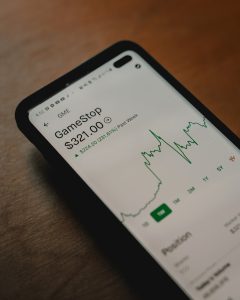Forex trading, also known as foreign exchange trading, is the process of buying and selling currencies in order to make a profit. This market is the largest and most liquid in the world, with an average daily turnover of $5.3 trillion. With the right knowledge and strategies, it is possible to predict forex movements and make successful trades. In this article, we will explore how to predict forex.
1. Understand the Market
The first step in predicting forex movements is to understand the market. Forex is affected by a wide range of factors, including economic data, political events, and even natural disasters. It is important to keep up-to-date with the latest news and developments in order to make informed trading decisions.
There are also various technical indicators that can be used to predict forex movements. These include moving averages, trend lines, and Fibonacci retracements. These indicators can help to identify trends and potential reversal points in the market.
2. Develop a Trading Plan
Before making any trades, it is important to develop a trading plan. This plan should outline your trading strategy, risk management techniques, and profit targets. By having a clear plan in place, you can avoid making impulsive decisions and increase your chances of success.
Your trading plan should also take into account your risk tolerance. This refers to the amount of risk you are willing to take on in each trade. It is important to set a stop loss order, which will automatically close your position if the market moves against you. This can help to limit your losses and protect your capital.
3. Use Fundamental Analysis
Fundamental analysis involves studying economic data and other factors that can affect currency values. This can include interest rates, inflation, employment figures, and political events. By analyzing this data, traders can gain insights into the health of an economy and the potential direction of its currency.
For example, if a country releases strong economic data, such as high GDP growth or low unemployment, this can increase demand for its currency. On the other hand, if a country experiences political instability or economic turmoil, this can decrease demand for its currency.
4. Use Technical Analysis
Technical analysis involves studying price charts and using technical indicators to identify patterns and potential trading opportunities. This can include studying trends, support and resistance levels, and chart patterns.
One popular technical indicator is the Relative Strength Index (RSI), which measures the strength of a currency pair’s price action. A reading above 70 indicates that a currency pair is overbought and could be due for a correction. Conversely, a reading below 30 indicates that a currency pair is oversold and could be due for a rebound.
5. Monitor Market Sentiment
Market sentiment refers to the overall mood or attitude of traders towards a particular currency. This can be influenced by a range of factors, including economic data, political events, and news headlines.
One way to monitor market sentiment is to look at the Commitment of Traders (COT) report. This report, which is released by the Commodity Futures Trading Commission (CFTC), shows the positions taken by large traders in the futures markets. By analyzing this data, traders can gain insights into the overall sentiment towards a particular currency.
In conclusion, predicting forex movements requires a combination of technical and fundamental analysis, as well as an understanding of market sentiment and risk management techniques. By developing a clear trading plan and staying up-to-date with the latest news and developments, traders can increase their chances of success in the forex market.





